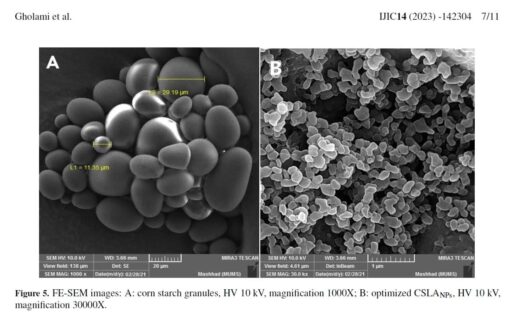Process optimization of corn starch nanoparticles containing linalyl acetate: characterization and antibacterial properties
Authors
Abstract
In this research, the Taguchi approach optimized the preparation process of corn starch nanoparticles
containing linalyl acetate (extracted from lavender). Sodium hydroxide and urea (solvent),
ethanol (anti-solvent), and Tween 80 (surfactant) were employed for the synthesis in the nanoprecipitation
method. The dimensions of the synthesized nanoparticles were measured by the dynamic
light scattering method. The surface morphology of the nanoparticles was determined by atomic
force microscopy and scanning electron microscopy. The results showed that the concentration
of starch (2% w/w) and linalyl acetate (1.5% w/w), temperature (55° C), and the starch to the
antisolvent ratio (1:15) had a significant effect on the size of the corn starch nanoparticle with
the linalyl acetate. The predicted values for mean size, PDI, and zeta potential were 56.37 nm,
0.388, and -19.4 mV, respectively. Accordingly, the experimental values for mean size, PDI,
and zeta potential were 59.7 nm, 0.395, and -22.7 mV, respectively. The size of the nanoparticles
was 59.7 nm with a spherical shape under the optimum conditions. The optimal formula
of nanoparticles’ antibacterial properties against a gram-negative bacterial strain (Escherichia
coli) and a gram-positive bacterial strain (Staphylococcus aureus) was evaluated. The maximum
diameter of the inhibition zone determined by disk diffusion and well diffusion methods was 21
and 23 mm for Staphylococcus aureus and 16 and 18 mm for Escherichia coli. The minimum
inhibitory concentration and minimum bactericidal concentration were observed at 12.5 mg/ml for
Escherichia coli and 6.25 mg/ml for Staphylococcus aureus, which have a relatively good ability
to inhibit these bacteria’s growth.




